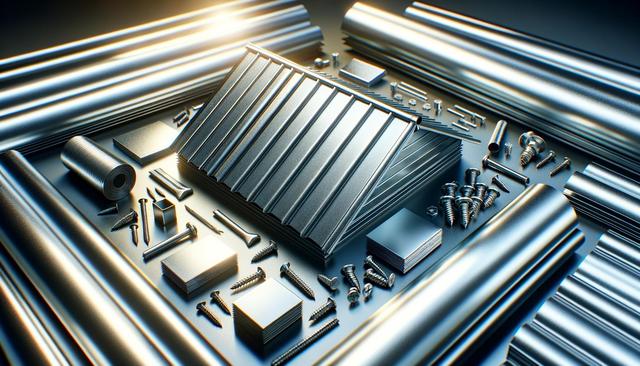Factors That Influence Metal Roofing Prices
Several key factors affect the overall cost of a metal roof, making it important for homeowners to understand what impacts pricing before starting a project. The first and most significant aspect is the type of metal used. Common materials include aluminum, steel, copper, and zinc, each with its own cost range. Aluminum and steel are generally more budget-friendly, while copper and zinc are considered premium options with higher price tags.
Another major component is the roofing style or profile. Metal roofing comes in various forms such as standing seam, corrugated panels, and metal shingles. Each style has different manufacturing and installation costs. Roofing complexity, such as the number of slopes, valleys, and penetrations, also impacts labor expenses.
Additional cost influences include:
- Roof size and pitch
- Local labor rates
- Underlayment material and insulation
- Removal of the existing roof (if necessary)
- Geographic location and climate
Understanding these elements gives homeowners a clearer picture of where their investment is going and helps in budgeting effectively.
Average Price Ranges for Metal Roofing
While prices can fluctuate based on the factors above, having a ballpark range is helpful to estimate potential costs. On average, metal roofing prices tend to fall between $5 to $14 per square foot, installed. This means a typical 1,500 square foot roof could cost anywhere from $7,500 to over $21,000, depending on material and complexity.
To break it down further:
- Corrugated steel panels: $5 – $8 per square foot
- Aluminum shingles: $8 – $12 per square foot
- Standing seam metal roofs: $10 – $14 per square foot
- Copper or zinc roofing: $15 – $25 per square foot
It’s also important to consider the long-term value. Though upfront costs are higher than some traditional roofing options, metal roofs tend to last much longer, with lifespans of 40 to 70 years, potentially offsetting initial expenses with long-term savings.
Installation Costs and Labor Considerations
Labor is another important component of metal roofing prices. Installation typically accounts for 30% to 50% of the total cost. The complexity of the installation, roof height, and local labor market all impact what you’ll pay. For instance, installing a metal roof on a steep or multi-level home will require more time and safety measures, increasing labor charges.
In addition, specialized skills are often needed for metal roof installation. Not all roofing contractors have experience with metal systems, so hiring a qualified installer is crucial. This can sometimes mean higher labor costs, but it also reduces the risk of errors and future repairs.
Homeowners should always:
- Request multiple quotes
- Check references and reviews
- Confirm licensing and insurance
- Ask about warranties and workmanship guarantees
Taking these steps can help ensure you receive quality service that aligns with your financial expectations.
Hidden Costs to Watch Out For
When budgeting for metal roofing, it’s easy to focus only on material and labor costs, but there are often hidden expenses that can catch homeowners off guard. For example, if your current roof must be removed, expect to pay additional fees for tear-off and disposal. Depending on the roof’s condition and local disposal regulations, this could add significant costs.
Other possible hidden expenses include:
- Structural reinforcements if the building can’t support the new roofing system
- Permits and inspection fees
- Upgrades to insulation or ventilation systems
- Custom flashing or trim work
It’s also wise to plan for unexpected repairs. During installation, contractors may discover damage to the roof decking or water infiltration that wasn’t visible during the initial inspection. Having a contingency budget of 10% to 15% can help cover these surprises without derailing your project.
How to Maximize Value When Choosing a Metal Roof
While costs are a significant consideration, value should not be overlooked. Metal roofing offers a range of long-term benefits that contribute to its overall worth. These include durability, energy efficiency, low maintenance, and improved home resale value. Choosing a roofing system that aligns with your regional climate and aesthetic preferences can enhance both performance and curb appeal.
Here are a few ways to ensure you’re getting the most out of your investment:
- Choose a material that balances cost and performance for your climate
- Opt for energy-efficient coatings to reduce cooling costs
- Invest in professional installation to ensure longevity
- Compare warranties offered by different manufacturers and contractors
By taking a holistic approach to material selection, contractor choice, and installation quality, homeowners can ensure their metal roofing investment pays off for decades to come.
Conclusion: Making Informed Decisions About Metal Roofing Prices
Understanding the components that influence metal roofing prices helps homeowners make informed, confident decisions. While the initial cost may be higher than some alternatives, the durability, energy savings, and long-term value often make metal roofing a worthwhile investment. By evaluating material options, installation details, and potential hidden costs, you can plan effectively and choose a solution that fits your home’s needs and your financial goals.


